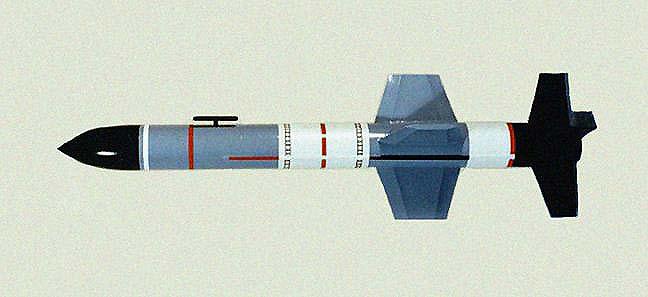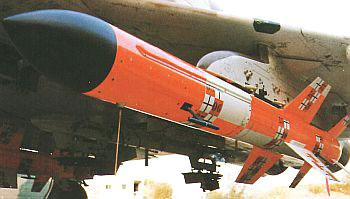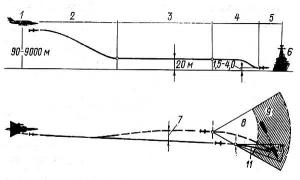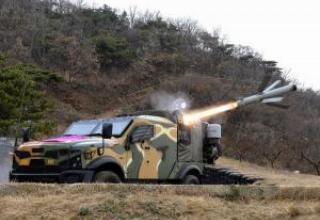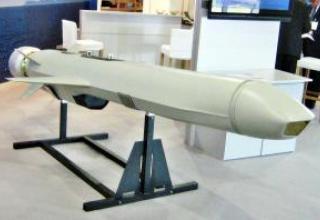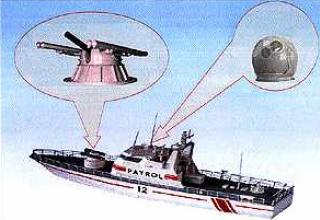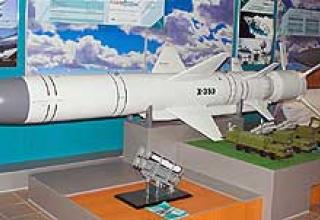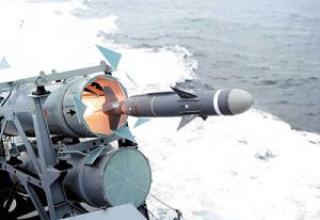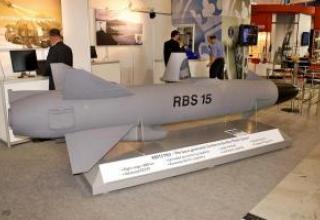The "Gabriel" Mk1 missile developed by "Israeli Aircraft Indusries" entered service with Israeli boats in the late 1960s. The relatively short range (about 25 km) and the presence of a semi-active homing head significantly limited the combat capabilities of the carrier, whose radar should be in operating mode until the target is hit. In the early 70's "Gabriel" Mk2 missile with a range of 36 km was developed, achieved by increasing the size and quality of the marching solid fuel engine. However, the missile's guidance system has remained the same.
New modifications of the Gabriel missile (ship - MkZ and aircraft - MkZ A/S), equipped with an active radar homing head (SAR), as foreign experts believe, to a greater extent meet modern requirements.
The MkZ A/S anti-ship cruise missile Gabriel is used with F-4 "Fantom", A-4 "Sky Hawk", C2 "Kfir", "Sea Scan" aircraft.
Composition:
The missile has a normal aerodynamic pattern. The hull consists of three compartments. The first compartment contains a guidance system (INS and CNS), the second compartment contains a power source, and the third compartment contains a semi-permeable combat unit designed to engage targets of different classes and equipped with a slow motion contact fuse. In the middle part of the fuselage is a cross wing and propulsion system, in the tail - the steering wheel and power drives.
The missile has a small EPR. Active radar noise-protected CNS X-band with rapid frequency conversion can operate in self-homing mode on the ship's station of active interference, which significantly reduces the effectiveness of air defense of the impact object.
You can use one of two modes to control the missile: stand-alone or with inertial navigation system correction. The first mode is used when launching from attack aircraft (fighter-bombers), the second mode is used when launching a missile from base patrol aircraft whose radars can simultaneously accompany several targets.
At autonomous control target coordinates are entered in the BCVM missiles simultaneously with the current information on speed and spatial position of the carrier at the time of launch. The launch vehicle is lowered to a height of 20 m according to the program, and then performs a horizontal flight under the control of a radio altimeter.
When guided by the inertial navigation system and the BCVM provides for the withdrawal of the missile in the target area and inclusion in the designated (calculated) point of the CNS. In the homing area the flight altitude is 1.5-4 m depending on the sea disturbance.
Autonomous control - the main mode for the missile "Gabriel" MkZ A/S. Targeting is performed in three ways:
- The first of them is based on automatic data entry from the aircraft radar. When the aircraft carrier enters the range of the missile data entry stops, and the flashing indicator informs the pilot about the possibility of starting the PCR.
- The second method involves obtaining data from external intelligence assets, such as another aircraft or an unmanned aerial vehicle.
- The third method is the simplest - calculated values of bearing and distance to the target are manually entered into the BCVM missiles through the fire control system panel. In addition, the pilot sets one of the calculated ranges of the missile's flight range: from 20 to 40 km or more than 40 km for the timely activation of the CNS.
According to foreign experts, the autonomous control of the missile also has a disadvantage due to the fact that the active GSP after inclusion searches in a fairly large area, which increases the vulnerability of the missile primarily from electronic warfare. To reduce the search zone (i.e., to increase the time of covert regime) when pointing the Gabriel MkZ missiles can be corrected inertial system. In this case, the carrier plane continues to accompany the target after the launch of the missile and corrects the trajectory of its flight on the radio command line.
The launch of Gabriel MkZ A/S by the launch vehicle is carried out in the range of altitudes of 90-9000 m: at a speed of 400-650 km / h - at low altitudes, at a speed of 650-750 km / h - at high altitudes.
The MkZ Gabriel shipborne missile can also be used in the command-and-control mode with radar illumination of the target, as in the case of the first missile modifications.
Characteristics:
| Motor unit | single-step circuit, RDTT |
| Length, m | 3.85 |
| Diameter, m | 0.34 |
| Weight, kg | 600 |
| Wingspan, m | 1,10 |
| Flight range, km | 60-80 |
| Flight speed, M. | 0,75 |
| Guidance System | INS+ARGSN |
| Fighting unit | semiconcrete |
| Weight of combat unit, kg | 150 |
| Placement in service | 1985 |
Sources:
- Б.И. Радионов Н.Н. Новиков "Крылатые ракеты в морском бою" 1987 г.
